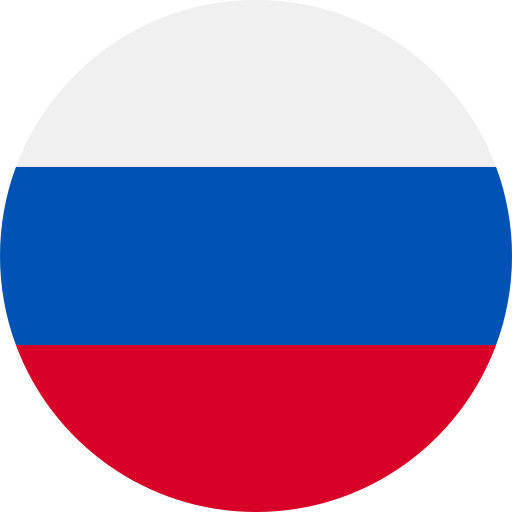Key Takeaways
- Influence on Vocabulary: Russian has significantly impacted the vocabulary of various languages, particularly in science and technology, with terms like “sputnik” and “cosmonaut” being widely adopted.
- Grammatical Structures: Many languages, especially Slavic ones, exhibit similarities to Russian in grammatical frameworks, such as verb conjugations and case systems.
- Cultural Exchange: The global spread of Russian literature enriches other languages by introducing unique expressions and themes from renowned authors like Tolstoy and Dostoevsky.
- Modern Media Impact: The globalization of media has facilitated the incorporation of Russian phrases and slang into everyday speech across cultures, showcasing ongoing linguistic evolution.
- Historical Context: Key historical events have shaped the development of the Russian language and its interactions with others, highlighting how societal shifts influence linguistic exchanges.
- Globalization Effects: The integration of Russian terminology into various industries reflects its adaptability in contemporary communication landscapes amid increasing cross-cultural interactions.
Have you ever wondered how one language can influence another? The impact of Russian on various languages around the world is a fascinating journey that reveals much about culture, history, and communication. From vocabulary to grammar structures, Russian has left its mark in unexpected ways.
Overview of Russian Language Influence
Russian significantly influences various languages, impacting vocabulary and grammatical structures. This influence stems from historical events, cultural exchange, and the global spread of Russian literature and media.
Vocabulary Impact
Many languages incorporate Russian words, particularly in areas like science and technology. For instance, terms related to space exploration often derive from Russian origins due to its pioneering role during the Space Race. Languages such as English, German, and Chinese adopted words like “sputnik” or “cosmonaut,” showcasing this direct influence.
Grammatical Structures
Some languages have adjusted their grammatical frameworks under Russian influence. For example, Slavic languages share similar conjugation patterns and case systems with Russian. Such similarities highlight how language contact can lead to structural changes over time.
Cultural Exchange
Cultural interactions play a vital role in shaping language. The prominence of Russian literature has introduced unique expressions into other languages. Works by authors like Tolstoy or Dostoevsky resonate globally, enriching other literary traditions with new themes and linguistic styles.
Modern Media Influence
In recent years, the globalization of media further spreads the impact of the Russian language. Films, music videos, and online content often feature phrases or slang that trickle down into everyday speech across different cultures. This ongoing exchange keeps evolving language landscapes vibrant.
By understanding these dimensions of influence—vocabulary adaptation, grammar evolution, cultural contributions—you recognize the far-reaching effects that one language can have on others around the world.
Historical Context of Russian Language
The Russian language has a rich historical background that significantly influences its development and interaction with other languages. Understanding this context enhances appreciation for its global impact.
Evolution and Development
The evolution of the Russian language dates back to the East Slavic tribes during the 9th century. Old East Slavic served as the foundation, evolving through various stages influenced by neighboring cultures, including Byzantine, Mongol, and later Western European elements. The introduction of Christianity in the 10th century brought a wealth of religious vocabulary from Greek and Latin. Over time, Peter the Great’s reforms in the 18th century modernized Russian further by incorporating terms from science and technology. This continuous evolution led to a dynamic linguistic system that adapts easily, allowing it to influence other languages profoundly.
Key Historical Events
Several key historical events shaped the trajectory of the Russian language. The establishment of Moscow as a cultural center in the late 15th century marked significant literary advancements. The incorporation of serfdom and subsequent social changes in Russia contributed to dialect diversity across regions. The disintegration of the Soviet Union in 1991 expanded Russian’s reach globally; many nations adopted or adapted Russian vocabulary for political, economic, or cultural reasons. These events highlight how history intertwined with linguistics facilitates exchanges between languages and reflects broader societal shifts.
Understanding these aspects offers valuable insights into how Russian not only developed but also interacted with other languages worldwide, influencing their vocabulary and structures while enriching global communication.
Linguistic Features of Russian
Russian boasts distinctive linguistic features that influence other languages significantly. Its complex phonetic and grammatical structures contribute to the richness of its impact on global communication.
Phonetic and Phonological Influence
Russian employs a variety of vowel and consonant sounds, creating unique phonetic patterns. These sounds can affect pronunciation in other languages when borrowed. For example, the hard and soft consonants in Russian may lead to variations in how certain words are pronounced across different languages. This phonological diversity sometimes results in language learners adopting these sounds, enriching their native pronunciation styles.
Vocabulary Contributions
Russian vocabulary has made substantial contributions across multiple fields, especially science and technology. Words like “sputnik” and “cosmonaut” have transcended borders, illustrating how specific terms can gain universal recognition. Additionally, cultural exchanges introduce various Russian phrases into everyday language use worldwide. The adoption of such vocabulary often reflects historical ties or shared interests among nations, fostering greater understanding through language adaptation.
By exploring these linguistic features—phonetics and vocabulary—you’ll see how elements from one language can weave seamlessly into others, expanding communication possibilities globally.
Case Studies of Language Influence
The influence of the Russian language extends across various languages, shaping vocabulary and grammatical structures significantly.
Impact on Slavic Languages
Many Slavic languages exhibit clear traces of Russian linguistic features. For example, Ukrainian and Belarusian both share a considerable amount of vocabulary with Russian due to historical ties. The use of similar verb conjugations and noun declensions illustrates the grammatical impact as well. In Polish, borrowed terms like “pierogi” (dumplings) have integrated seamlessly into everyday conversation alongside Russian influences on pronunciation styles. Such interactions highlight how these languages evolve while maintaining distinct identities.
Influence on Non-Slavic Languages
Russian has also made its mark on non-Slavic languages, particularly in scientific fields. Terms such as “sputnik” and “cosmonaut” are now commonplace in English, German, and Chinese vocabularies thanks to Russia’s advancements during the space race. This adoption reflects not only lexical borrowing but also cultural exchange—showing how significant events can introduce new words that enrich other languages. Additionally, the phonetic characteristics of Russian often affect pronunciation in other contexts; speakers may adopt unique sounds when learning or using these borrowed terms.
Understanding these case studies provides insight into the broader implications of language interaction worldwide while showcasing how one language can deeply influence others through cultural exchange and historical connections.
Modern-Day Implications
Modern-day implications of Russian’s influence on languages extend beyond historical significance. The globalization of the Russian language showcases its adaptability and relevance in contemporary communication.
Globalization of the Russian Language
Globalization amplifies the reach of the Russian language, integrating it into diverse linguistic landscapes. As businesses expand internationally, they often encounter Russian terminology in fields like technology and science. For instance, terms like “sputnik” and “cosmonaut” have seamlessly entered English and other languages due to global cultural exchanges. This incorporation reflects a broader trend where industries leverage Russian vocabulary to connect with audiences familiar with these concepts.
Moreover, digital platforms facilitate cross-cultural interactions, allowing individuals worldwide to engage with Russian content. Streaming services offer access to films, music, and literature that introduce new words and phrases into everyday use. Consequently, you may notice an increasing number of non-Russian speakers using borrowed expressions that enrich their conversations.
Language and Cultural Exchange
Language functions as a bridge between cultures, enabling mutual understanding through shared vocabulary. In many regions, particularly those with historical ties to Russia or significant interactions—like Eastern Europe—linguistic exchange becomes evident. You might find words from Russian embedded within local dialects or even standard usage.
Cultural events such as festivals or international collaborations also promote this exchange. They highlight common themes while introducing unique linguistic elements from each culture involved. As you explore various communities around the world, consider how these cultural exchanges shape not only language but also identity.
Understanding these modern implications invites reflection on how interconnected our world has become through language interaction. Each borrowed term carries a story—a testament to human creativity in forging connections across borders.
Conclusion
Understanding how Russian has shaped other languages reveals the intricate connections between culture and communication. This influence extends beyond mere vocabulary to include grammatical structures and phonetic characteristics that enrich global linguistic diversity. As you explore these dynamics, you’ll appreciate the historical significance and modern implications of language interactions.
The ongoing globalization of Russian continues to foster cross-cultural exchanges, making it relevant in today’s interconnected world. By recognizing the impact of Russian on various languages, you can gain insights into the shared human experience that language facilitates, promoting greater understanding across different cultures.
Frequently Asked Questions
What is the main focus of the article?
The article examines the significant influence of the Russian language on other languages globally, analyzing its impact on vocabulary and grammar through historical events, cultural exchanges, and the spread of Russian literature and media.
How does Russian influence other languages?
Russian affects various languages by contributing vocabulary in fields like science and technology, with terms such as “sputnik” and “cosmonaut” being commonly adopted. Additionally, some languages have adjusted their grammatical structures due to similarities with Russian.
What historical events shaped the Russian language?
Key events include the evolution from East Slavic tribes in the 9th century, Byzantine and Mongol influences, Peter the Great’s modernization efforts in the 18th century, and Moscow’s rise as a cultural center—all crucial for shaping Russian’s development.
Are there specific examples of linguistic borrowing from Russian?
Yes! Languages like English, German, and Chinese have integrated terms related to space exploration from Russian. For instance, words like “sputnik” reflect this lexical borrowing resulting from cultural exchange during significant historical moments.
How does globalization affect the use of Russian?
Globalization enhances communication across cultures by incorporating Russian terminology into various fields. Digital platforms facilitate interactions that promote learning and using borrowed expressions among non-Russian speakers worldwide.
What role do cultural exchanges play in language influence?
Cultural exchanges foster mutual understanding through shared vocabulary. Events and collaborations between nations with historical ties to Russia contribute to shaping both language use and identity within those communities.
Can you give an example of how Slavic languages are influenced by Russian?
Many Slavic languages share vocabulary with Russian due to their historical connections. For instance, Ukrainian incorporates numerous words from Russian while maintaining similar grammatical features due to their common linguistic heritage.







